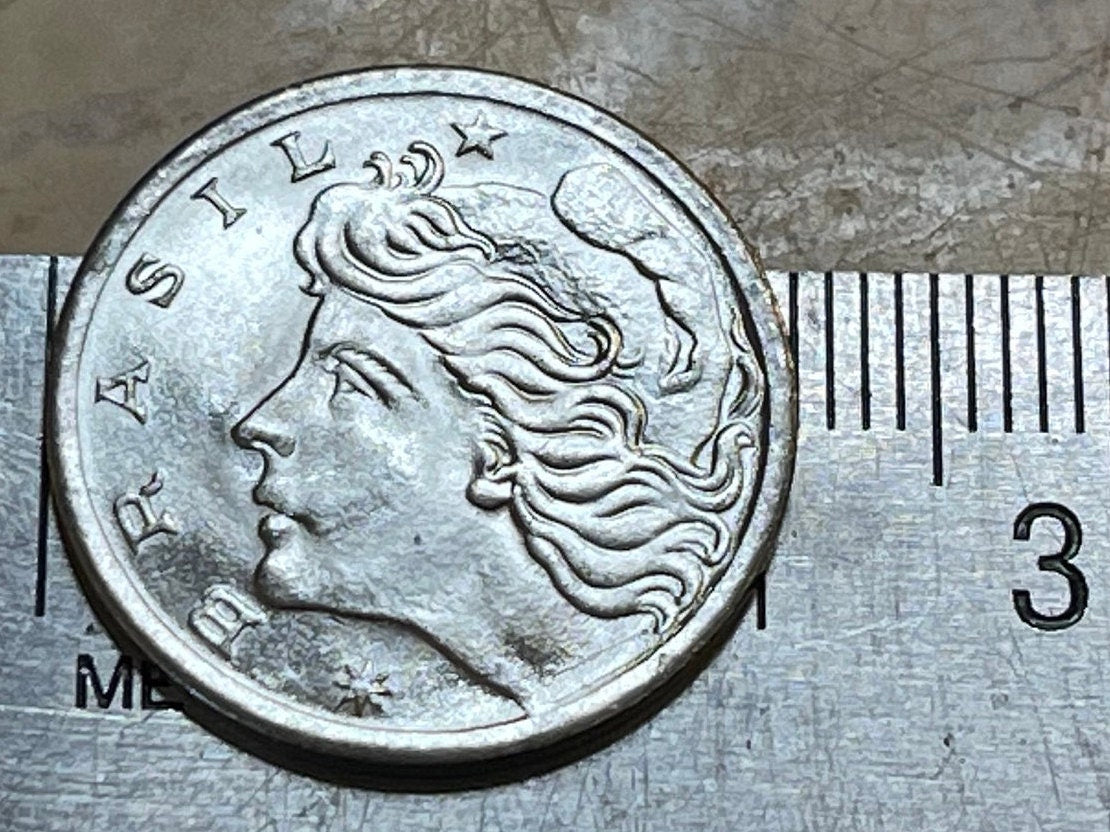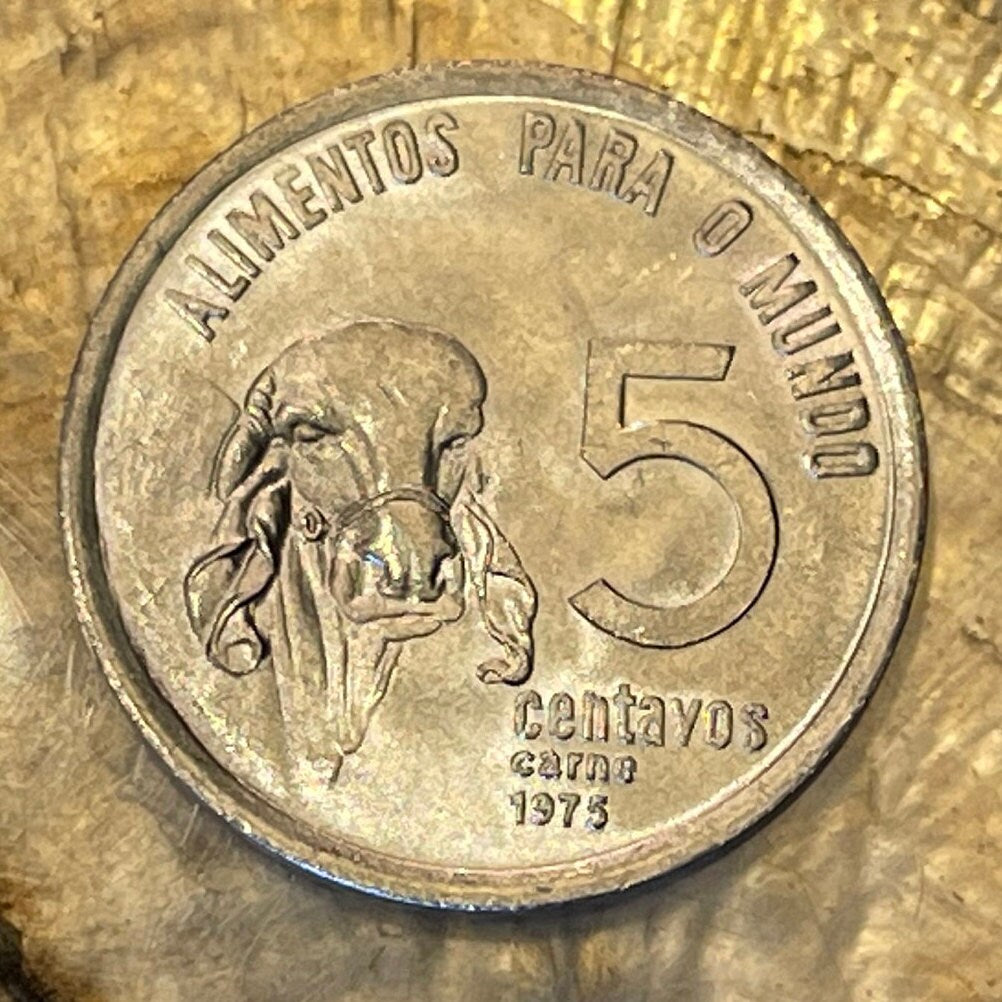elemintalshop
Zebu & Liberty Head 5 Centavos Brazil Authentic Coin Money for Jewelry and Craft Making
Zebu & Liberty Head 5 Centavos Brazil Authentic Coin Money for Jewelry and Craft Making
Couldn't load pickup availability
Zebu & Liberty Head 5 Centavos Brazil Authentic Coin Charm for Jewelry and Craft Making
Commemorative issue: F.A.O.
Obverse: Effigy of Republic and the country name to the left
Lettering: * BRASIL *
Translation: Brazil
Reverse: Zebu and the value to the right
Lettering: ALIMENTOS PARA O MUNDO
5
centavos
carne
Translation: Food for the World
5
Centavos
Beef
Features
Issuer Brazil
Period Federative Republic of Brazil (1967-date)
Type Circulating commemorative coin
Years 1975-1978
Value 5 Centavos (0.05 BRB)
Currency Cruzeiro novo (1967-1986)
Composition Stainless steel
Weight 2.7 g
Diameter 21 mm
Thickness 1.15 mm
Shape Round
Technique Milled
Orientation Coin alignment ↑↓
Demonetized Yes
Number N# 3816
References KM# 587.1, Schön# 93
Wikipedia:
A zebu (/ˈziːb(j)uː, ˈzeɪbuː/; Bos taurus indicus), sometimes known as indicine cattle or humped cattle, is a species or subspecies of domestic cattle originating in South Asia. Zebu are characterised by a fatty hump on their shoulders, a large dewlap, and sometimes drooping ears. They are well adapted to withstanding high temperatures, and are farmed throughout the tropical countries, both as pure zebu and as hybrids with taurine cattle, the other main type of domestic cattle. Zebu are used as draught and riding animals, dairy cattle, and beef cattle, as well as for byproducts such as hides and dung for fuel and manure. Zebu, namely miniature zebu, are kept as companion animals.[citation needed] In 1999, researchers at Texas A&M University successfully cloned a zebu.[1]
...Zebu, which can tolerate extreme heat,[11] were imported into Brazil in the early 20th century. Their importation marked a change in cattle ranching in Brazil, where feral cattle had grazed freely on extensive pasturage, and bred without animal husbandry. Zebu were considered "ecological" since they could graze on natural grasses and their meat was lean and without chemical residues.[12]
In the early 20th century in Brazil, Zebu were crossbred with Charolais cattle, a European taurine breed. The resulting breed, 63% Charolais and 37% zebu, is called the Canchim. It has a better meat quality than the zebu and better heat resistance than European cattle. The zebu breeds used were primarily Indo-Brazilian with some Nelore and Guzerat. Another Charolais cross-breed with Brahmans is called Australian Charbray and is recognised as a breed in some countries.
*******
Wikipedia:
The Efígie da República (Portuguese for Effigy of the Republic) is used as a national personification, both in Brazil and in Portugal, symbolizing the Republic.
Brazil
The effigy is a representation of a young woman wearing a crown of bay leaves in Roman style and a phrygian cap. It is present in allegoric paintings and sculptures displayed in government buildings throughout Brazil, and engraved on Brazilian real coins and banknotes. It was first used as a pro-Republican icon in the 19th century, inspired by France's Marianne. After the proclamation of the Republic in 1889, it became an important symbol of the newly formed Republic.
Share



















